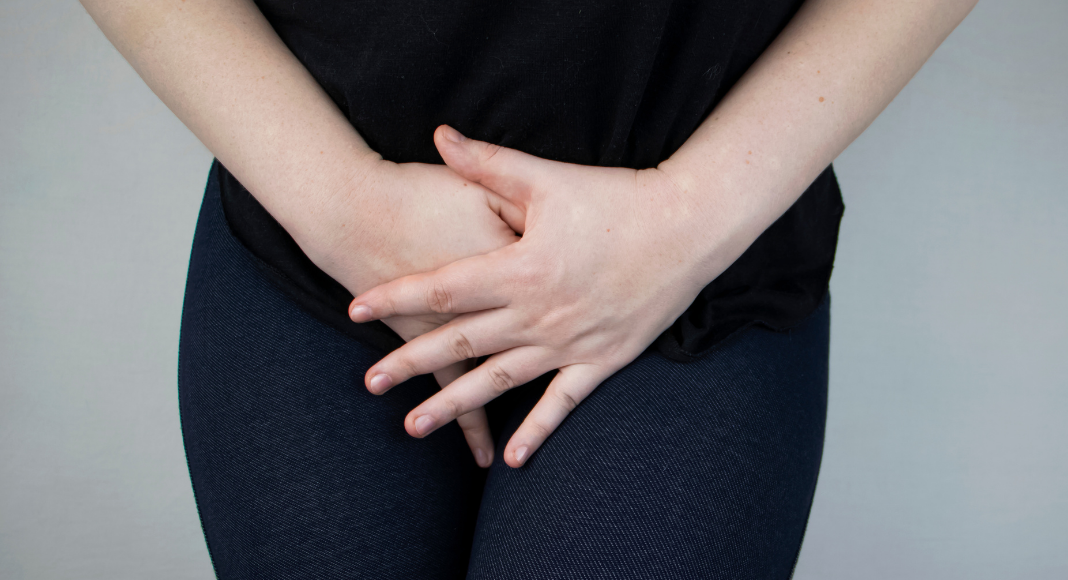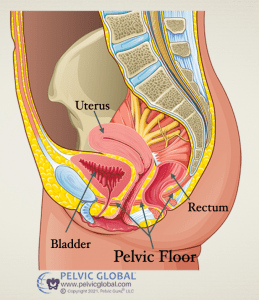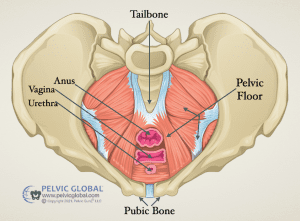 The pelvic floor is “hot” these days. It’s trendy! You’ve likely heard someone talking about it and how it’s going to change your life!
The pelvic floor is “hot” these days. It’s trendy! You’ve likely heard someone talking about it and how it’s going to change your life!
You’ve heard your doctor tell you that you need to “do your Kegels.”
You’ve heard your yoga teacher say to “shine from your root chakra.”
You’ve heard your fitness instructor say, “work that pelvis.”
While everyone agrees on the magic of the pelvic floor, no one talks about where it is? What does it do? And how it works? The pelvic floor is often like the elusive monk in the mountains everyone talks about, but no one has ever seen.
As a pelvic floor physical therapist, I see women every day who think they have been “working their pelvic floor” when they are actually thinking of “squeezing something down there somehow.” They not only lack awareness of what a contraction should feel like, but they also don’t understand exactly why they are doing pelvic floor exercises.
What Is the Pelvic Floor
It is a group of muscles much like your biceps, calves, or hamstrings – meaning you have complete control over this muscle group. They are shaped like a sling and sit inside the pelvis. They extend from your tailbone in the back to the pubic bone in the front. And as the name suggests, the muscle group is literally “a floor.” If you remove all the organs, you’ll see these muscles forming the base of the “pelvic bowl.”
Organs like the bladder, uterus, and rectum are supported inside the pelvis by this “floor” (along with other ligaments and fascia).




How does it work?
This muscle wraps around the three openings in our body – the urethra (where we pee from), vagina, and anal opening (where we poop from). When this muscle contracts, it closes these openings. Remember the last time you tried to hold your pee or gas? When this muscle relaxes, it opens these openings. Remember the time you sat on the toilet to pee or poop? It gives us control over our body’s very basic (and important!) functions.
It also works wonders to help us during our sexual endeavors. Whether you’re with a partner or going solo, you need these muscles to help in arousal and getting that orgasm. A healthy pelvic floor means stronger orgasms. How’s that for magic?
The pelvic floor is also a part of your “core muscles” and helps support your spine and hips, and gives you strength when you lift or carry something heavy. It holds organs in place and makes it possible for you to jump without peeing your pants or run without needing a change of clothes.
What if it doesn’t work?
One of the lesser-known facts about the pelvic floor is that (just like any other muscle in the body), it needs to contract as well as relax. Things can go south if the pelvic floor isn’t able to contract or relax.
Inability to contract the pelvic floor can leak pee while doing strenuous activities like coughing, sneezing, or laughing. Even though it is common for this to happen after childbirth, it is not normal and can worsen over time. It can make you pass gas at inopportune moments and make it hard for you to do basic physical activities like jump, squat, or run without leaking pee or feeling a constant urge to pee.
Unless you’ve resigned to “no jump” workouts, avoid the trampoline that your kid loves to jump on, or only wear black leggings to the gym, it’s time to strengthen your pelvic floor.
Inability to relax the pelvic floor can cause discomfort while urinating, frequent urination, and a sudden urge to pee. The inability to relax can cause a feeling of inability to empty the bladder properly and even constipation.
A tight pelvic floor can make it hard for the vaginal canal to stretch and make intercourse painful. It can also give you pain, period cramps, and tailbone pain.
Alright, dear readers, now that you know what, where, and how, it is time to “shine from your root chakra.”
Sit comfortably in a firm chair with back supported and feet resting on the floor.
To engage the pelvic floor, try these cues.
- Imagine there is a tampon inside your vagina. Now imagine pulling the tampon up and inside your body as you slowly breathe out.
- Imagine picking up (two) blueberries with your vaginal and anal openings.
- Imagine there is an elevator inside your pelvis. As you breathe out, slowly ride the elevator going up (towards your nose).
To relax the pelvic floor, try these cues.
- Put both hands on your belly. Breathe deeply into your belly (under your hands) and imagine letting your pelvis get wider/bigger.
- Breathe in and imagine riding that same elevator down.
- Breathe in and think of peeing (or starting the act).
Try each cue and see (and feel) what works for you.
So there you have it. It’s an important part of your body that I hope you’ll consider connecting with it.
And if you’re having problems and experiencing any of the symptoms mentioned above, help is at hand! Reach out to a physical therapist who can assess the function of your pelvic floor and set you on the road to recovery.
Remember, just like any other muscle in your body, the pelvic floor can be conditioned. It can also be stretched, strengthened, and toned. So next time you start a workout or go to the gym, don’t forget to appreciate this hidden treasure of a muscle that’s quietly doing its job and keeping your organ systems functioning well.




















